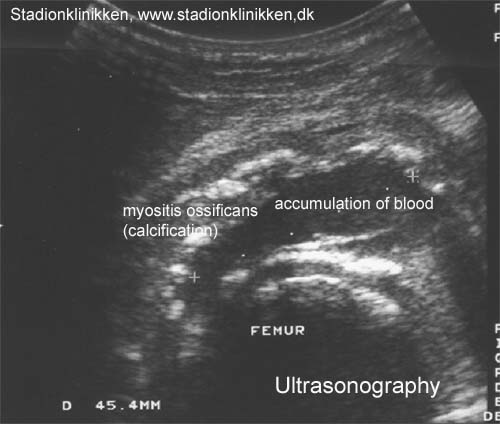|
Good results of fasciotomy in chronic compartment syndrome of the lower leg DESIGN: Retrospective study. SETTING: Department of Surgery, Central Military Hospital, Utrecht, the Netherlands. METHOD: Closed fasciotomy was performed in 81 patients (151 compartments) after standardized measurement of the pressure of the symptomatic compartment during exercise. The anterior compartment was affected 149 times and the lateral compartment twice. The pressure reading was repeated at least 3 months after the operation. All operated patients 6 months postoperatively were sent a written questionnaire inquiring about the results of the operation. RESULTS: Postoperative complications included a neurinoma (3 times) and a seroma (once). The mean postoperative intramuscular pressures were lower than the preoperative ones: the pressure at rest fell from 22.1 to 14.0 mm Hg (p < 0.05), the exercise pressure from 57.5 to 25.4 mm Hg (p < 0.01) and the relaxation pressure from 34.4 to 25.2 mm Hg (p < 0.05). Ten patients had an unchanged increased pressure after the operation, for which a second fasciotomy was performed 4 times. Attenuation of symptoms was reported by 59 patients (76%). Nine patients with poor results had already had a combination with some other hyperpressure injury before the operation. CONCLUSION: Closed fasciotomy in a demonstrated chronic compartmental syndrome in most cases gave good results, viz. attenuation of symptoms and a decrease of the intramuscular pressure, especially after exercise. |
Kategoriarkiv: complications for muscle ruptures
article6.1
|
Evaluation of outcomes in patients following surgical treatment of chronic exertional compartment syndrome in the leg. DESIGN: A retrospective descriptive cohort study. SETTING: Tertiary care sport medicine referral practice. PATIENTS: A consecutive series of 62 patients surgically treated for CECS from January 1991 to December 1997. MAIN OUTCOME MEASURES: A questionnaire was designed and developed to assess pain (using a 100 mm visual analogue scale), level of improvement, level of maximum activity, satisfaction level, and the occurrence of reoperations. RESULTS: Fifty patients had anterior/lateral compartment involvement, 8 patients had deep posterior compartment involvement, and 4 patients had anterior/lateral/deep posterior compartment involvement. The demographics of the 39 respondents and 23 nonrespondents were similar. The mean percent pain relief of respondents was 68% (95% CI [confidence interval] = 54% to 82%). There was no relationship between percent pain relief and the documented immediate post exercise compartment pressures. A clinically significant improvement was reported by 26 of 32 (81%) anterior/lateral compartment patients and 3 of 6 (50%) patients with deep posterior compartment involvement. Patient level of activity after fasciotomy was classified as equal to or higher than before the operation with a lesser degree of pain by 28 of 36 (78%) patients, while 8 of 36 (22%) patients reported lower activity levels than before the operation. Of the patients reporting lower activity, seven were due to exercise related pain in the post operative leg(s) and one was due to lifestyle changes. Thirty of 38 patients (79%) were satisfied with the outcome of the operation. Four of 62 patients (6%) failed the initial surgical procedure and required revision surgery for exercise-induced pain. In addition, one of these individuals also had a sympathectomy and another had a neurolysis performed at the time of revision surgery. Three of the 62 (5%) patients had subsequent operations for exercise-induced pain on different compartments than the initial surgical procedure. One individual had an unsuccessful operative repair of a posttraumatic neuroma. Postoperative complications were reported by 5 of 39 (13%) patients in the additional comments section of the questionnaire. CONCLUSIONS: The majority of patients surgically treated for CECS experience a high level of pain relief and are satisfied with the results of their operation. The level of pain relief experienced by patients is not related to the magnitude of the immediate post exercise compartment pressures. Despite the possibility that some patients have less favorable outcomes, experience complications, or need subsequent operations, fasciotomy is recommended for patients with CECS as there is no other treatment for this condition. |
article6
|
Intracompartmental pressure before and after fasciotomy in runners with chronic deep posterior compartment syndrome. |
article5.3
|
Acute compartment syndrome due to closed muscle rupture. |
article5.2
|
Acute compartment syndrome |
article5.1
|
Acute exertional compartment syndrome of the medial foot. |
article5
|
Intracompartmental pressure before and after fasciotomy in runners with chronic deep posterior compartment syndrome. |

ultrasonic-image

article1.2
|
Myositis ossificans of the upper extremity: a long-term follow-up. |
article1.1
|
Treatment of traumatic myositis ossificans circumscripta; use of aspiration and steroids. |
